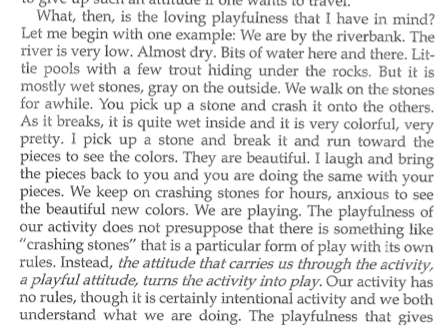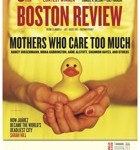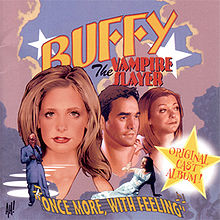One key aspect of my own pedagogy of troublemaking is the belief that asking and exploring lots of questions is very important. I have devoted a lot of attention to the value of asking questions on this blog. I have written about Judith Butler and why, Paulo Freire and learning to question, Cynthia Enloe and curiosity, and Padgett Powell and the interrogative mood. Today I want to add another entry on this topic to my blog: Patricia A. Johnson and the art of genuine and playful questioning (a la Hans-Georg Gadamer and Maria Lugones).
While browsing through the stacks the other week, I happened across Philosophy, Feminism and Faith. Why did I pick it up? I can’t remember but it must have had something to do with my own religion and philosophy backgrounds (I have a BA in religion, a MA in theological studies and ethics, and my secondary discipline for my PhD was philosophy). By chance, I found an article by Patricia A. Johnson entitled, “Learning to Question.” Just glancing at the opening epigraphs, I knew that I would appreciate her perspective:
Questions always bring out the undetermined possibilities of a thing (Hans-Georg Gadamer, Truth and Method).
Interrogation itself becomes an act of critical intervention, fostering a fundamental attitude of vigilance rather than denial (bell hooks, Yearning).
In her essay, Johnson divides the essay up into three sections, each speaking to a different (and sometimes in conflict) community to which she belongs: trained philosophers, active feminists, and practitioners of the Quaker religion (Friends). In my brief engagement with Johnson’s work, I want to focus on these first two communities which Johnson discussions in relation to Gadamer and Lugones.
Gadamer and philosophy: The art of genuine questioning
Drawing upon Gadamer and his work in Truth and Method (which I think I own, but can’t find–sigh), Johnson argues for the value of learning how to ask genuine questions. Genuine questions are only possible when we recognize (and embrace?) our unknowingness and when we become “motivated by a sincere desire to know” (142). She distinguishes genuine questions from false ones which are disingenuous and not aimed at gaining new knowledge but at directing others towards one’s already established beliefs. I like how Johnson describes false questions in the context of teachers who ask their students questions–in class or on exams–that “do not allow our own presuppositions to be questioned” and that “clearly require that our own unexamined prejudices be accepted” (142). This is important because it is not only students who need to learn how to answer (and ask) genuine questions; teachers need to learn how to ask (and answer) genuine questions too. Johnson also distinguishes genuine questions from distorted ones that misdirect our explorations of ideas. Because distorted questions can get us off track, we need to make sure that we are constantly (and vigilantly) reflecting on why, how and when we ask questions (143). Finally, Johnson argues that genuine questioning requires that we consider the many sides of our question, the context in which it is asked and the communities in which we (the askers and answerers) live.
Lugones and feminism: Learning to question playfully
After discussing questioning in relation to philosophy, Johnson reflects on it in relation to her feminism. She argues that genuine questions also demand that we adopt a playful attitude (a la Lugones) and an “openness to the reconstruction of of one’s self and one’s world” (147). I really like how she brings in Lugones and her playful attitude. Lugones is a big influence on my own troublemaking work and I have written and thought a lot about the playful attitude in relation to virtue ethics. In fact, I just wrote about the playful attitude yesterday (here). When I have more energy and time I should revisit how Lugones fits in for Johnson and for my own teaching philosophy.
Here are a few succinct summaries that Johnson offers:
Philosophy first led me to question and to ask about the nature of questioning. Philosophy taught me to recognize that I must know when I do not know. I must distinguish genuine from false and distorted questions. I must recognize that addressing a question requires investigating the many sides of a question. I must ask questions in the context of community. Feminism showed me the complexity of communities and the importance of being a question (149).
In reference to being a question, Johnson writes:
to be a feminist in the Academy required one to learn how to raise questions that others preferred not to address and did not even see as questions. I have also learned that as a feminist, my simple presence is sometimes a question (144).
A few random thoughts:
- I want to re-visit Gadamer’s Truth and Method, especially this section.
- I wonder about this desire to know–what if we imagined our questions to be motivated by a desire to feel or to experience? While I think we can gain new understandings through our exploration of questions; we still can’t ever really know. Maybe unknowing is a good (as in stimulating, productive, creative) place to stay?
- Being a question–what are the dangers of being a question? What are the differences, particularly in terms of our agency and how we are understand as subjects, between asking questions and being a question?




